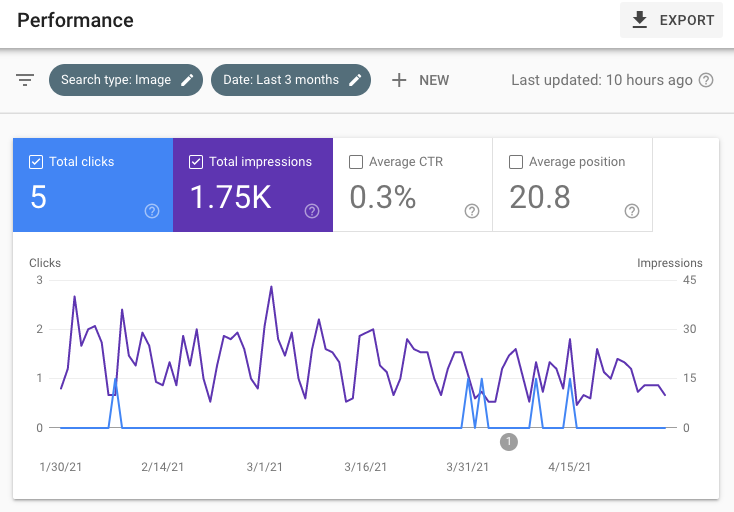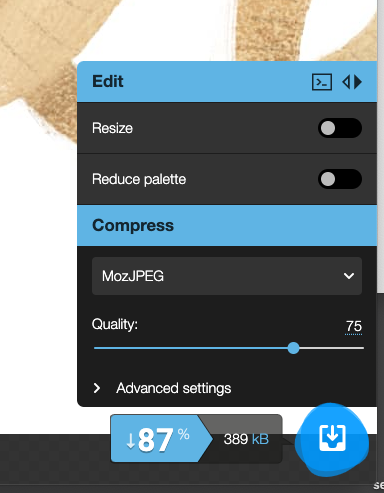PSA: If you change your image URLs, and you care about Image Search, remember to redirect them. While tweaking my site, I noticed PSI suggesting to change some of my image formats, and realized it& #39;s worth mentioning this again.
But first: don& #39;t panic. Not all sites get significant traffic from Google Images (so you might not need to worry about it), and you can do a lot to improve images without changing the image file URLs.
Let& #39;s start. Is it really a problem worth focusing on? Check the Search Console performance report ( https://support.google.com/webmasters/answer/7576553?hl=en">https://support.google.com/webmaster... ), select "Search Type: Image", and look at the numbers. Are you getting lots of *useful* clicks from Google Images? If so, read on.
PSI: Take some of the popular images landing pages in Page Speed Insights: https://developers.google.com/speed/pagespeed/insights/">https://developers.google.com/speed/pag... Are you seeing speed issues which point at image size issues? "Serve images in next-gen formats"? "Properly size images"? "Efficiently encode images"?
FWIW, there& #39;s "no simple guide to complete image optimization" (I& #39;m sure someone will make one now though :-)). You can get books on optimizing images for the web: https://twitter.com/addyosmani/status/1387431906359185408">https://twitter.com/addyosman... . These things can be hard to get perfect, and you usually don& #39;t need to make them perfect.
There are a few first steps you can try:
- use image lazy loading (especially if they& #39;re below the fold). WP can do this for you, plugins can do it too.
- make images the right size (however you& #39;re displaying them)
- specify the image size (again, with a plugin, often)
- use image lazy loading (especially if they& #39;re below the fold). WP can do this for you, plugins can do it too.
- make images the right size (however you& #39;re displaying them)
- specify the image size (again, with a plugin, often)
And then there& #39;s: load the really big images in your image editor, and see if there are compression settings you can use to save them with the same format in a smaller size. Try https://squoosh.app/ ">https://squoosh.app/">... if image editors aren& #39;t your thing. There& #39;s more at https://web.dev/uses-optimized-images/">https://web.dev/uses-opti...
Drop the updated images in, make sure lazy loading is active, and you specify the width / height, and check Page Speed Insights again. Chances are, if it& #39;s like my images, it& #39;s already much better. Maybe it& #39;s good enough for you? If not …
Again, a simple way to try it out for a handful of images is https://squoosh.app/ ">https://squoosh.app/">... . WebP might be a format to try, https://web.dev/uses-webp-images/">https://web.dev/uses-webp... has more suggestions. Also keep in mind that not all browsers support super-modern formats, so check your user stats too.
Depending on your site& #39;s setup, you may be able to use responsive images ( https://developer.mozilla.org/en-US/docs/Learn/HTML/Multimedia_and_embedding/Responsive_images">https://developer.mozilla.org/en-US/doc... ) to include modern formats together with your previous image formats. This is the optimal configuration, but it can be hard.
If, after all of this, you need to move from .jpg to .webp, set up redirects for these images on your server. Google Images takes longer to reprocess, and if the old URLs stop, they may drop out for a while, until the new ones are picked up. Redirecting helps prevent that.
This also matters if you move your images to a CDN that& #39;s on a different hostname (say to http://cdn.yoursite.com"> http://cdn.yoursite.com ). If Google Images traffic is important, then make sure to also set up redirects for the old URLs to the new CDN.
Want more links? Here& #39;s our guide to images: https://developers.google.com/search/docs/advanced/guidelines/google-images">https://developers.google.com/search/do... , and our guide for responsive images: https://developers.google.com/web/fundamentals/design-and-ux/responsive/images">https://developers.google.com/web/funda...
What did I miss? What worked best for your images?
What did I miss? What worked best for your images?

 Read on Twitter
Read on Twitter




